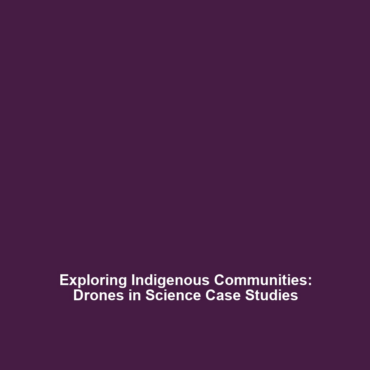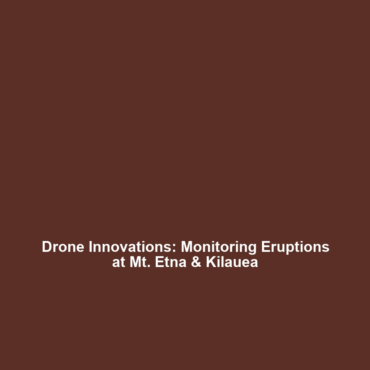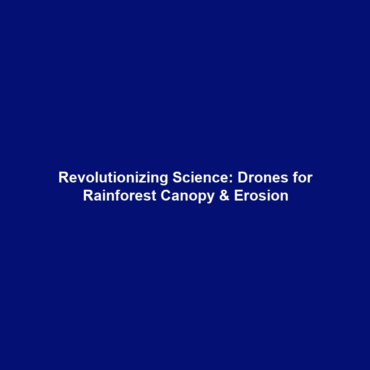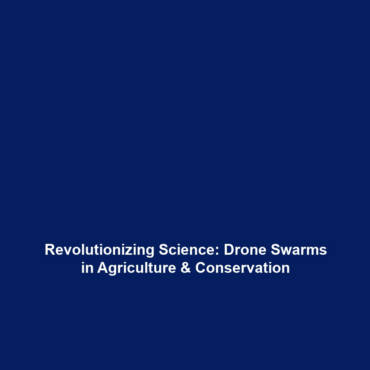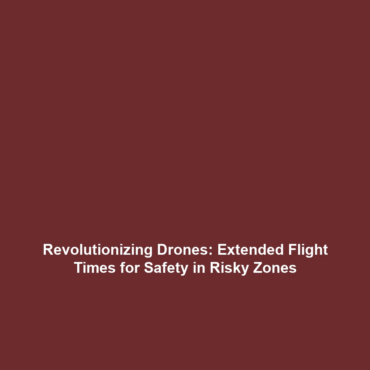Case Studies of Drones Aiding in Studying Indigenous Communities Without Direct Human Interaction
Introduction
The integration of drones in scientific research has revolutionized the way we study diverse cultures, particularly indigenous communities. Case studies of drones aiding in studying indigenous communities without direct human interaction are pivotal, as they minimize disruption while providing critical data. This approach not only enhances the accuracy of research but also respects the autonomy of these communities. Through innovative drone technologies, researchers can gather valuable insights into ecological and social dynamics, which is essential for addressing pressing global challenges. By leveraging drones in science, we can ensure that the voices and realities of indigenous peoples are documented authentically.
Key Concepts
Understanding the role of drones in studying indigenous communities involves several key concepts:
- Remote Sensing: Drones equipped with advanced sensors can capture high-resolution images and spatial data without human interference.
- Ethical Research Practices: Utilizing drones aligns with ethical standards in anthropology and environmental science, ensuring respectful engagement with communities.
- Data Analysis: Analytic tools allow researchers to assess collected data effectively, leading to insights about cultural and environmental shifts.
These principles fit into the broader category of drones in science, showcasing how technology can foster a deeper understanding of human experiences and ecosystems.
Applications and Real-World Uses
Case studies exemplifying the applications of drones in studying indigenous communities highlight their practical uses:
- Environmental Monitoring: Drones can monitor land use and ecological changes in indigenous territories, providing invaluable data for conservation efforts.
- Cultural Heritage Documentation: Aerial surveys can document historical sites without the need for ground intrusion, preserving the integrity of cultural landmarks.
- Health Surveys: Remote sensing can aid in assessing community health by analyzing environmental factors that contribute to well-being.
These examples illustrate how drones are used in studying indigenous communities and their relevance to drones in science.
Current Challenges
Despite their advantages, several challenges exist in employing drones for research in indigenous contexts:
- Privacy Concerns: Communities may have valid concerns regarding surveillance and data ownership.
- Technical Limitations: Current drone technology may have limitations in data collection and processing under certain conditions.
- Regulatory Issues: Navigating the legal landscape of drone usage can be complex and varies by region.
Understanding these challenges of studying indigenous communities through drones is crucial for advancements in this field.
Future Research and Innovations
Looking ahead, several innovations are set to shape the future of using drones in indigenous studies:
- Autonomous Drones: Next-gen drones equipped with AI may operate independently, allowing for longer and more precise missions.
- Improved Sensors: Ongoing advancements will enhance the quality and depth of data collected.
- Collaborative Research Models: Future frameworks will likely focus on inclusive approaches that engage indigenous knowledge systems.
These breakthroughs will significantly impact the landscape of drones in science, providing new avenues for exploration and understanding.
Conclusion
In summary, case studies of drones aiding in studying indigenous communities without direct human interaction highlight the transformative potential of drone technology. These studies not only contribute to drones in science but also advocate for ethical and sustainable research practices. It is essential for researchers to continue exploring and innovating in this field while respecting the rights of indigenous communities. For further insights, consider exploring related topics on remote sensing technology and indigenous research methodologies.
